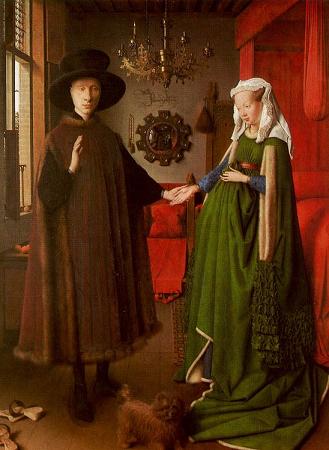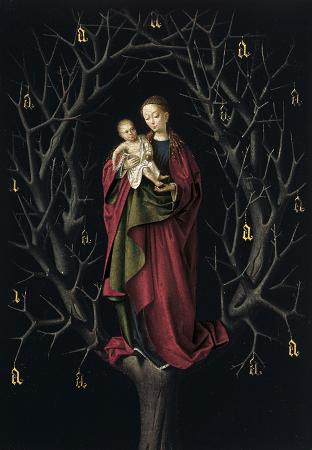Northern Renaissance Painting. Early Netherlandish painting is the work of artists, sometimes known as the Flemish Primitives, active in the Burgundian and Habsburg Netherlands during the 15th-and 16th-century Northern Renaissance, especially in the flourishing cities of Bruges, Ghent, Mechelen, Louvain, Tournai and Brussels, all in present-day Belgium. The period begins approximately with Robert Campin and Jan van Eyck in the 1420s and lasts at least until the death of Gerard David in 1523, although many scholars extend it to the start of the Dutch Revolt in 1566 or 1568. Early Netherlandish painting coincides with the Early and High Italian Renaissance but the early period is seen as an independent artistic evolution, separate from the Renaissance humanism that characterised developments in Italy, although beginning in the 1490s as increasing numbers of Netherlandish and other Northern painters traveled to Italy, Renaissance ideals and painting styles were incorporated into northern painting. As a result, Early Netherlandish painters are often categorised as belonging to both the Northern Renaissance and the Late or International Gothic. The major Netherlandish painters include Campin, van Eyck, Rogier van der Weyden, Dieric Bouts, Petrus Christus, Hans Memling, Hugo van der Goes and Hieronymus Bosch. These artists made significant advances in natural representation and illusionism, and their work typically features complex iconography. Their subjects are usually religious scenes or small portraits, with narrative painting or mythological subjects being relatively rare. Landscape is often richly described but relegated as a background detail before the early 16th century. The painted works are generally oil on panel, either as single works or more complex portable or fixed altarpieces in the form of diptychs, triptychs or polyptychs. The period is also noted for its sculpture, tapestries, illuminated manuscripts, stained glass and carved retables. The first generations of artists were active during the height of Burgundian influence in Europe, when the Low Countries became the political and economic centre of Northern Europe, noted for its crafts and luxury goods. Assisted by the workshop system, panels and a variety of crafts were sold to foreign princes or merchants through private engagement or market stalls. A majority of the works were destroyed during waves of iconoclasm in the 16th and 17th centuries; today only a few thousand examples survive. Early northern art in general was not well regarded from the early 17th to the mid-19th century, and the painters and their works were not well documented until the mid-19th century. Art historians spent almost another century determining attributions, studying iconography, and establishing bare outlines of even the major artists' lives; attribution of some of the most significant works is still debated. Scholarship of Early Netherlandish painting was one of the main activities of 19th-and 20th-century art history, and a major focus of two of the most important art historians of the 20th century: Max J. Friedlšnder and Erwin Panofsky. The term Early Netherlandish art applies broadly to painters active during the 15th and 16th centuries in the northern European areas controlled by the Dukes of Burgundy and later the Habsburg dynasty. These artists became an early driving force behind the Northern Renaissance and the move away from the Gothic style. In this political and art-historical context, the north follows the Burgundian lands which straddled areas that encompass parts of modern France, Germany, Belgium and the Netherlands. The Netherlandish artists have been known by a variety of terms. Late Gothic is an early designation which emphasises continuity with the art of the Middle Ages. In the early 20th century, the artists were variously referred to in English as the Ghent-Bruges school or the Old Netherlandish school. Flemish Primitives is a traditional art-historical term borrowed from the French primitifs flamands that became popular after the famous exhibition in Bruges in 1902 and remains in use today, especially in Dutch and German. In this context, primitive does not refer to a perceived lack of sophistication, but rather identifies the artists as originators of a new tradition in painting. Erwin Panofsky preferred the term ars nova, which linked the movement with innovative composers of music such as Guillaume Dufay and Gilles Binchois, who were favoured by the Burgundian court over artists attached to the lavish French court. When the Burgundian dukes established centres of power in the Netherlands, they brought with them a more cosmopolitan outlook.
more...














